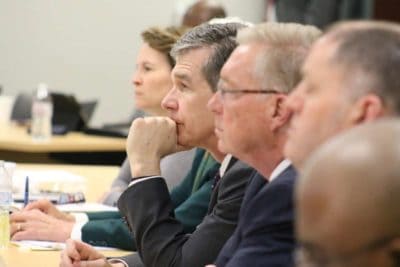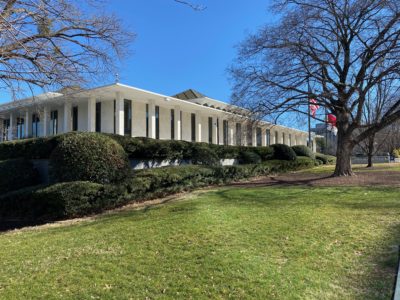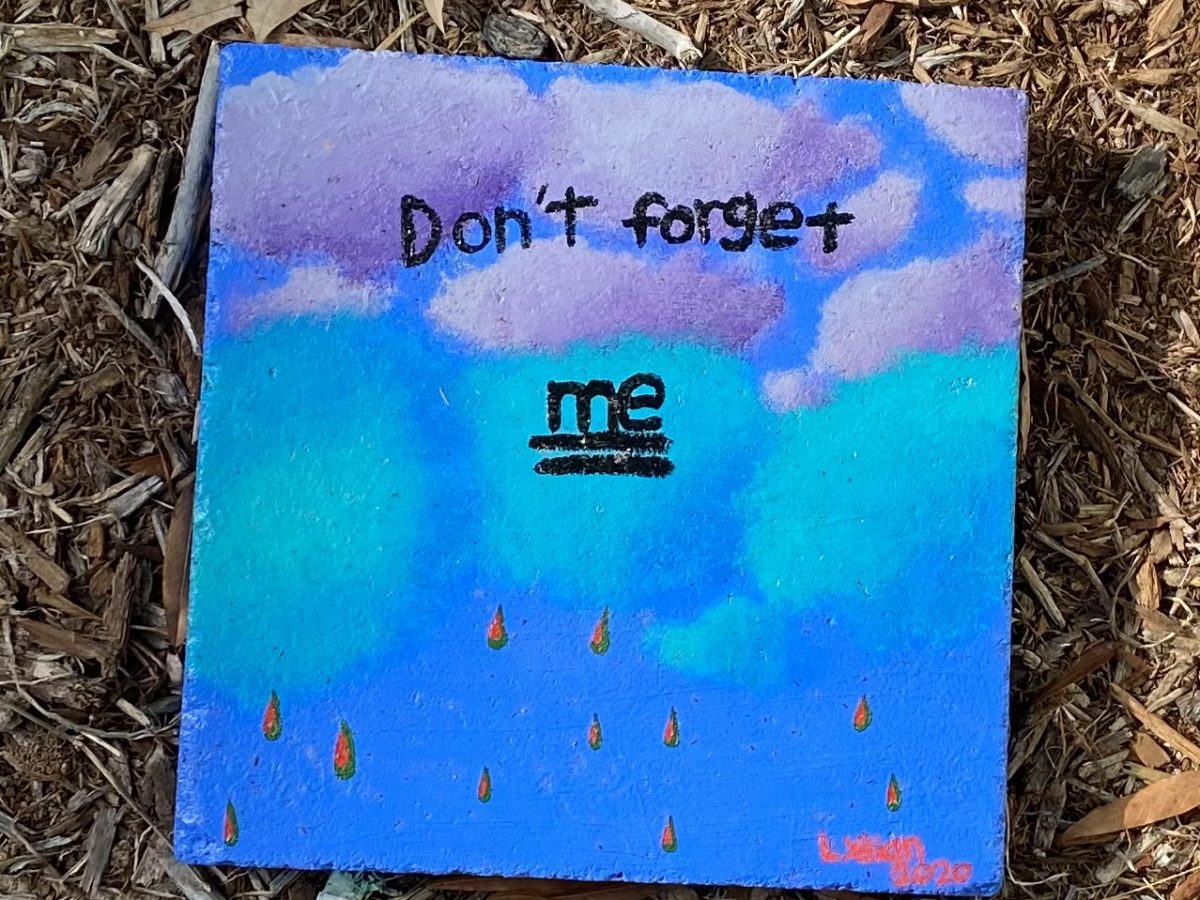
|
|
“Don’t forget me,” reads a tile created by a student for the courtyard of Carroll Magnet Middle School, where State Superintendent of Public Instruction Catherine Truitt was sworn in on Jan. 2, 2021.
“We are going to do amazing things together in the name of students,” she said.
The new U.S. Secretary of Education Miguel Cardona urges, “Education can be the great equalizer — it was for me — if we prioritize, replicate, and invest in what works for all students, not just some.”
Yet too often money and politics complicate and compromise the ability of policymakers to do what’s in the best interest of our students.
As our pandemic school year comes to a close, where are we, North Carolina?
Here is a look at the money, the leadership, the initiatives, and the issues influencing our ability to provide a sound, basic education to our students.
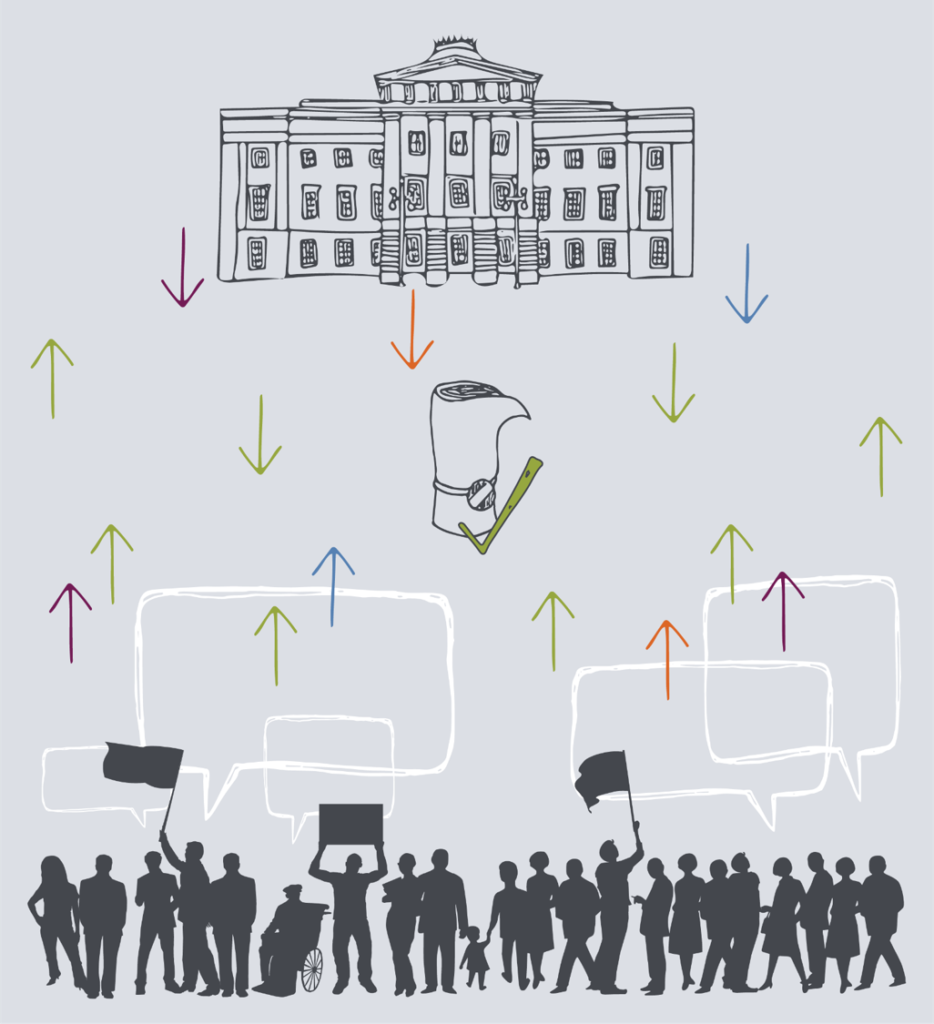
Show us the money
There is an unprecedented amount of money to invest in our schools and our community colleges, in our state and our future.
Let’s start with three sources of money:
- The federal COVID-19 relief dollars.
- The state’s unallocated general fund balance that has accumulated in large part because there wasn’t a budget agreement in 2019.
- Anticipated state revenues for 2021-23.
Keeping track of all of it — and who can spend it and how long they have to spend it — is not easy.
There have been three tranches of federal funding: the Coronavirus Aid, Relief, and Economic Security (CARES) Act enacted in March 2020 totaled $2.2 trillion, including $34.25 billion specifically for education; the Coronavirus Response and Relief Supplemental Appropriations (CRRSA) Act enacted in December 2020 totaled $900 billion, including $87.79 billion specifically for education; and the American Rescue Plan (ARP) Act enacted in March 2021 totaled $1.9 trillion, including $137.76 billion specifically for education. There are three funds for education in each act.
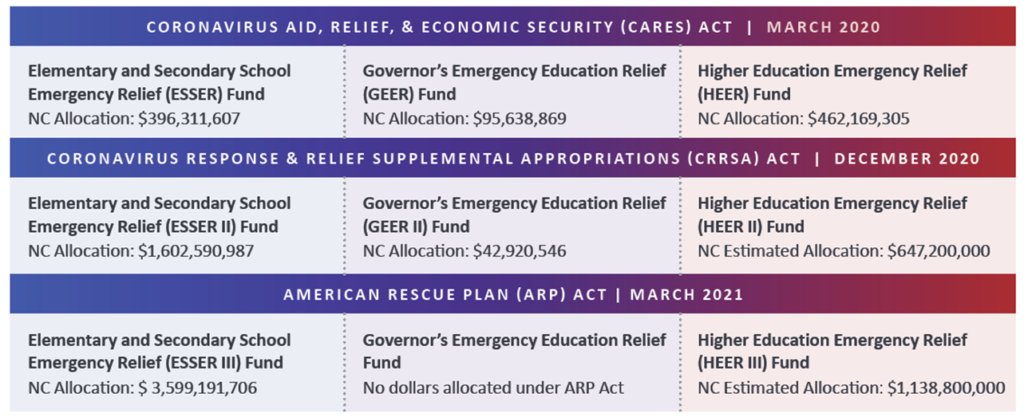
Here is how much money was allocated to North Carolina in the CARES Act: the Elementary and Secondary School Emergency Relief (ESSER) Fund totaled $396,311,607 (here are the district allotments), the Governor’s Emergency Education Relief (GEER) Fund totaled $95,638,869, and the Higher Education Emergency Relief (HEER) Fund totaled $462,169,305.
Here is how much money was allocated to North Carolina in the CRSSA Act: the ESSER Fund totaled $1,602,590,987 (here are the district allotments), the GEER Fund totaled $42,920,546, and the HEER Fund totaled $647,200,000.
Here is how much money was allocated to North Carolina in the ARP Act: the ESSER Fund totaled $3,599,191,706 (here are the district allotments); the GEER Fund totaled $0 (there were no additional appropriations for this fund); and the HEER Fund totaled $1,138,800,000.
Additionally, the state had a lot of flexible funding under CARES and ARP to also address education. For example, under the CARES Act, the legislature allocated $25 million to the N.C. Community College System, $44 million to the UNC System, and $263.6 million to the Department of Public Instruction.
That’s all a whole lot of money.
In addition, the state has about $7.32 billion in unallocated general fund dollars to put to use.
The Senate and the House agreed to general fund operating spending targets of $25.7 billion for 2021-22 and then $26.6 billion for 2022-23 — and then the consensus revenue forecast was released.
The state has a total of $60.4 billion to spend through 2022-23, with $29.7 billion of that in the first year and $30.7 billion in the second, according to a press release.
There is so much money many think there could be substantial general fund spending and substantial tax relief.
Policymakers have to sequence how they spend all of these different buckets of money as they think about investments in the state. They have to understand what can be funded with one-time money versus what needs recurring appropriations.
Best practice then would encourage them to spend dollars in this order: specific time-limited federal dollars, then nonspecific time-limited federal dollars for state spending, then state general fund dollars.
What’s next? The last monthly report posted by the state controller was in April. We are eagerly awaiting the May report to check on the actual amount of unallocated general fund dollars.
Gov. Roy Cooper’s budget proposal to the legislature includes just over $16 billion in 2021-22 and almost $16.8 billion in 2022-23 just for education. This week the legislative budget process will kick off. The Senate will go first.
What can you do? You can influence how the money is spent. Think about how to leverage federal and state funding with local and philanthropic dollars. You can contact your legislator and urge a transparent, robust budget process. You can ask the hard questions, like who is keeping track of how all the districts and community colleges spend the money and who is evaluating how they spend the money relative to student outcomes or other objectives?

The politics of race
We are all watching together in real time words and concepts being politicized.
Race. Equity. Diversity. Critical race theory. Culturally responsive. Indoctrination.
An article in Education Week describes critical race theory this way:
“Critical race theory is an academic concept that is more than 40 years old. The core idea is that racism is a social construct, and that it is not merely the product of individual bias or prejudice, but also something embedded in legal systems and policies.”
Please take a moment to reflect on what is happening at the federal, state, and local level through the lens of a teacher, a principal, and a superintendent. Remember we have educators serving more liberal communities and more conservative communities and everything in between.
For context, of our 1,368,256 students in 2020-21, 745,792 of them are not white — 55%.
The U.S. Department of Education
Meet Secretary Miguel Cardona. You can follow him on Twitter at @teachcardona and @SecCardona. Cardona was born in Connecticut to Puerto Rican parents, and he previously served as Commissioner of Education in Connecticut.
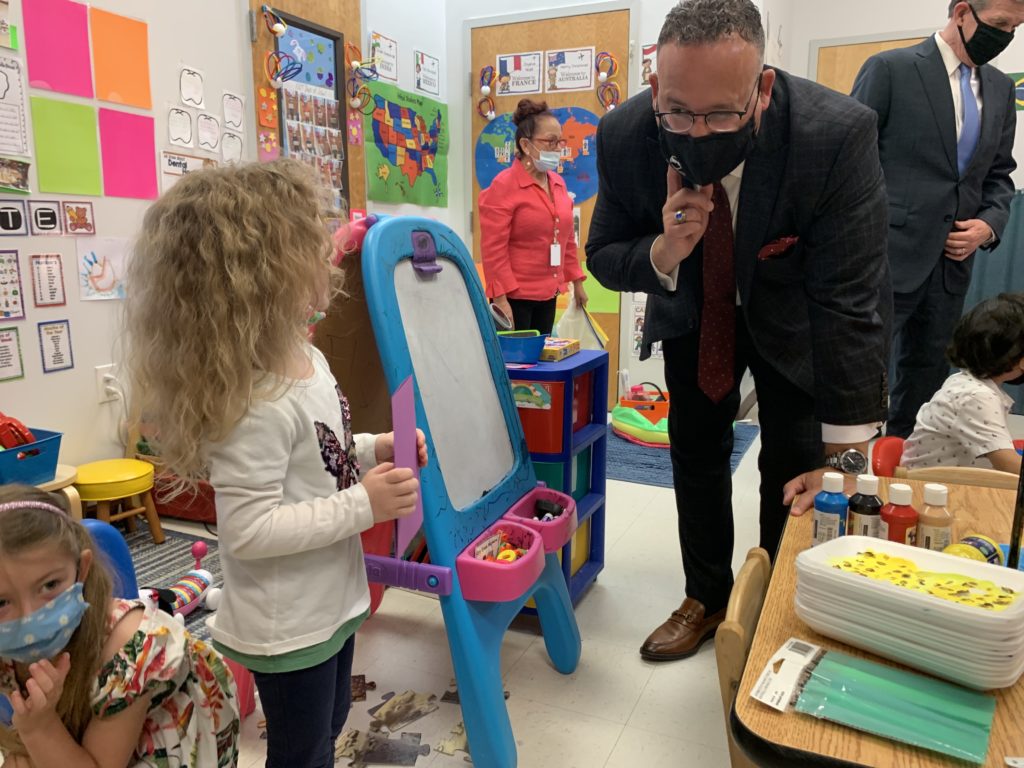
Here is a list of all the actions Secretary Cardona and the U.S. Department of Education are taking “to advance equity in education and ensure schools across the nation are serving all students.”
The public comment period is closed, but here you can see Secretary Cardona’s proposed priorities for the American History and Civics Education programs.
“We propose these priorities to support the development of culturally responsive teaching and learning and the promotion of information literacy skills in grants under these programs,” said the notice in the Federal Register.
The N.C. State Board of Education
In 2019, the State Board of Education adopted a strategic plan to guide its work until 2025. Explore the website to see the guiding principles, goals, and objectives.
The Board also adopted an equity statement. Here it is in toto:
The State Board is committed to delivering equitable opportunity to every student in North Carolina, bearing in mind that “fair” is not always “equal”, and equal is not always equitable. Therefore, “Educational Equity” is the belief and practice of ensuring that every student is treated in a fair and just manner, providing the necessary allocation of resources for the success of every student, and eliminating discriminatory barriers to full participation and opportunities for every student.
The Board adopted a longer equity resolution, which you can see under the guiding principles on the website.
Robert Hull, the CEO of the National Association of State Boards of Education, lifts up the State Board’s strategic plan and work on equity as a national model.
Superintendent Catherine Truitt
Catherine Truitt was elected superintendent of public instruction in the November 2020 elections. She won with 51.38% of the vote and a large footprint. It was her first foray into politics, and she won this statewide race during the pandemic without being on the road and without raising a lot of money.

She has assembled a rock star team, including Michael Maher, who also ran for superintendent. Her direct reports include teacher Julie Pittman and principal Tabari Wallace.
By all accounts, she has worked to build a good working relationship with the State Board of Education. Early wins include joint legislative budget priorities, bipartisan legislation on school reopening, and a statewide bill with near unanimous support adopting and implementing the Science of Reading in our classrooms.
Truitt has been out on the road visiting schools all over North Carolina. You can see where the team is going by following along on this blog. Notably, these visits aren’t press events. After one visit, a mayor called to tell me those Truitt met with were “over the moon.” That never happened with her predecessor.
But the politicization of equity threatens to put an end to the kumbaya.
Equity is part of Truitt’s Operation Polaris. In this slide deck, you can see her vision, how the department is organized, and who is responsible for what. Dr. Catherine Edmonds — the former superintendent in Bertie County Schools and Elizabeth City-Pasquotank Public Schools — is the deputy state superintendent of the Office of Educational Equity.
Here is Truitt’s definition of equity: “Equity in education is supposed to mean giving students what they need when they need it.”
Back when she was running for the office she now holds, she said:
“Now, another fault line is revealed by the protests over racial inequality and injustice that are occurring daily in many communities large and small across our state. In both of these areas we need to look more to students to highlight problems as well as solutions. Who better than students who lived through this year’s pandemic and digital learning to highlight both what went right and what went wrong? Who better than students who walk the halls of our schools every day to point out the racial inequalities and disparities that exist in our schools and to suggest real, meaningful ways to address those? In these areas, and in many others, ongoing, meaningful dialogue with students will help our educational system deliver better outcomes and make our state a better place for ALL people.”
By now, you — and the superintendent — have seen the national headlines, for example:
- Critical race theory battle invades school boards — with help from conservative groups.
- As schools expand racial equity work, conservatives see a new threat in critical race theory.
As Truitt notes, since day three of holding office, she has weighed in on this issue, first with the social studies standards.
In early May, a bill requiring teachers to post online instructional materials and activities used in classrooms hit educators hard. It was teacher appreciation week. It was the pandemic school year.
Truitt’s campaign Twitter account @CTruittNC was dark from Nov. 25,2020 until May 12, 2021, when she posted this tweet about a different bill, House Bill 324:
Less than a month later, as the school year was winding down, Truitt delivered comments and answered questions from the Orange County Republican Party about critical race theory, surveys of students, the social studies standards, and the Department of Public Instruction. You can view the video here.
From “bellyaching” to “mess” to “cowardice,” you can see on social media the word choice and the timing stung many in the education ecosystem from teachers to the DPI team to members of the State Board to corporations. Even Republicans in the legislature contacted us.
Pat Ryan, who works in the office of Senate President Pro Tem Phil Berger, R-Rockingham, said, “In those remarks, she expressed inaccurate speculation about what the Senate will do regarding House Bill 324.”
Truitt clarified her remarks on Twitter and followed up with: “As your superintendent, I will continue to do everything I can to stop CRT and eradicate it from classrooms. Republicans in NC are united on this.”
The local level
In the meantime, local school boards and superintendents across the state are caught in the political vortex. Here is a sampling of the news stories:
- Moore County School Board Seeking Delay of New Social Studies Standards.
- Critical Race Theory Protests Reach Onslow County During Board of Education Meeting.
- Critical Race Theory concerns aired to Alexander County Board of Education.
- In Johnston County, Commissioner Smith Questions School Board Chair, Superintendent About Critical Race Theory Policy.
Lawsuits seem inevitable as school boards contemplate not following state law and policy. In the meantime, N.C. General Statute 115C-47(29c)(b) says, “Local boards, superintendents, principals, and supervisors shall not allow content-based censorship of American history in the public schools of this State, including religious references in these writings, documents, and records.”
It begs the question: How do teachers, principals, and superintendents implement the State Board’s strategic plan in classrooms, schools, and districts while the politics continue to play out?
2019 Teacher of the Year Mariah Morris asks, “Do we have data and evidence to suggest that teachers are engaging in indoctrination that needs to be checked by potential state law?”
“My public school experience that spans approximately 15 years leads me to believe that teachers instruct, we lead, we love, and we care for our students. But we don’t indoctrinate our children,” she said.
Recently an exchange in Johnston County on whether critical race theory is taught went like this:
Chair of the Board: “At the present time it is not being taught in Johnston County Public Schools.”
Board Member: “Then if it’s not being taught it should be very, very easy to adopt a policy to affirm that situation.”
In my travels, I see teachers take on lots of tough topics with their students in their classrooms. I have seen the place of prayer and faith in classrooms and schools come up, for example. I understand what our Constitution says about separation of church and state, and let me assure you that doesn’t keep it from coming up. Last fall, as Confederate monuments were being taken down, others pushed to make sure Confederate history would still be taught.
There needs to be space in our classrooms for students to talk about the issues of our day — all of the issues. As Superintendent Truitt said, “meaningful dialogue with students will help our educational system deliver better outcomes and make our state a better place for ALL people.”
Instead of discussing and legislating what can and can’t be taught, maybe we should discuss how issues are taught in our classrooms and schools. Teachers continue to lift up Paideia, a program that fosters critical and creative thinking through Socratic seminars. Parents continue to request that discussion prompts for families be sent home so they are aware and can weigh in with their children.
In this interview on Carolina Business Review, Truitt said she and DPI would “support local districts to improve the outcomes for all kids.” While politics may make that more difficult, it should continue to be the north star.
What can you do? Let’s tie this back to money. In the Carolina Business Review interview, Truitt also said:
“We’ve got this infusion of federal dollars coming to us that will hopefully allow local districts to look at the specific needs of their communities and say, ‘What can we do differently? How can we take the students we have, meet them where we are, and carry them forward?’ And we are certainly positioning ourselves at the department to lend our expertise to local superintendents and their teams and schools to come along side them and help them make decisions about using this money to meet the needs of students.”
If you care about equity, on either side, regardless of how mad you are in this moment, weigh in on that process.

Statewide initiatives sustain momentum
Several statewide initiatives continue to push forward with cross-sector, bipartisan support amidst the politics.
Thanks to the leadership of myFutureNC, North Carolina has an attainment goal: By 2030, 2 million North Carolinians will have a high-quality postsecondary degree or credential. Here you can see county profiles. Recently, 15 community collaboratives were selected for their work “to better align their education systems with the needs of their regional economy.”
The Longleaf Commitment is a big win for myFutureNC and North Carolina. High school seniors from low- and middle-income families can get “at least $2,800 in federal and state grants to cover tuition and most fees at any of the state’s 58 community colleges.”
The North Carolina Education Human Capital Roundtable “is a group of state education leaders and practitioners working together to find innovative ways to address the state’s teacher shortage issue. The group has been meeting since December 2018 to develop recommendations to help increase the quality, quantity and diversity of teacher candidates and prepare them to be licensed, hired, supported and retained as highly effective educators in North Carolina schools.”

DRIVE is the Governor’s Task Force on Developing a Representative and Inclusive Vision for Education. You can see the recommendations here.
If you haven’t heard about BEST NC’s STRIDE (strategic teacher recruitment with intentionality, diversity, and excellence), you can read more about it here. It complements both the work of the Human Capital Roundtable and DRIVE.
NC Education Corps “partners with local schools to recruit, train, and deploy corps members. Corps members — including community college and university students, recent graduates, and retirees — are paid a living wage by schools to work part-time as tutors, mentors … “
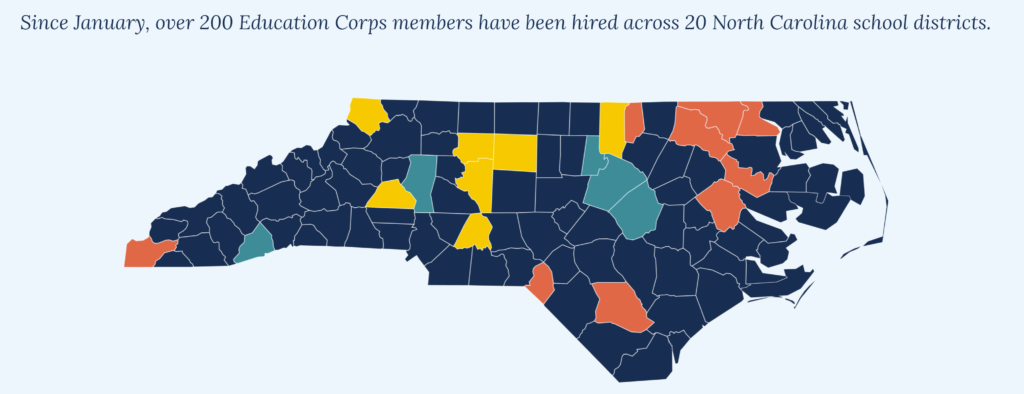
The Leandro lawsuit continues to be complicated by political gridlock. Here is an update.
There are a couple of promising things to watch that are bubbling. Transcend Education will be announcing which district in North Carolina will be part of their inaugural cohort of innovative rural schools. North Carolina is part of the Path Forward, which will allow “state leaders to share strategies for embedding the science of reading into teacher training programs, holding those programs accountable for early literacy outcomes, and enlisting the help of philanthropic groups in such efforts.” And David Stegall will continue to lead DPI’s work on innovation, including (hopefully) the development of a graduate profile — a shared, aspirational vision of what skills students have when they graduate.
Other issues to watch
We are awaiting the numbers from the N.C. Division of Non-Public Education on homeschools and private schools, which will likely be released in July. On the one hand, the pandemic created an opportunity for more parents to get comfortable with homeschooling and online education. On the other hand, the massive influx of money to public schools may be the first thing to create real momentum back towards public schools since the charter school bill was passed in North Carolina back in 1996.
As the design of schools shape shifts post-COVID-19, we are watching to make sure the arts continue to be part of all education options.
This fall community colleges across North Carolina will be offering associate degrees to students who want to be teachers. We can’t wait to see how this impacts the teacher pipeline, especially in our rural communities.
We are worried about our educators — teachers, principals, superintendents, and community college faculty, staff, and presidents. We are watching trends in turnover closely and whether the state invests in things that make educators feel valued.
State leaders are beginning to talk about untethering assessment from accountability. We are curious to see if that picks up steam over the summer and into the new school year.
Given trends in enrollment, the impact of the pandemic on workers, and the needs of our economy, we hope and expect to see community colleges statewide reach out and enroll more and more adult learners.
Let’s listen to our students
All students need to feel welcomed in our classrooms and in our schools. As Truitt says, our students walk the halls. They know the challenges they face in our schools and in our communities better than any of us, but in recent political conversations they seem to have been forgotten.
Let’s engage them and seek “real, meaningful ways to address” the things that stand in their way of the hopes and dreams we share for all of them.
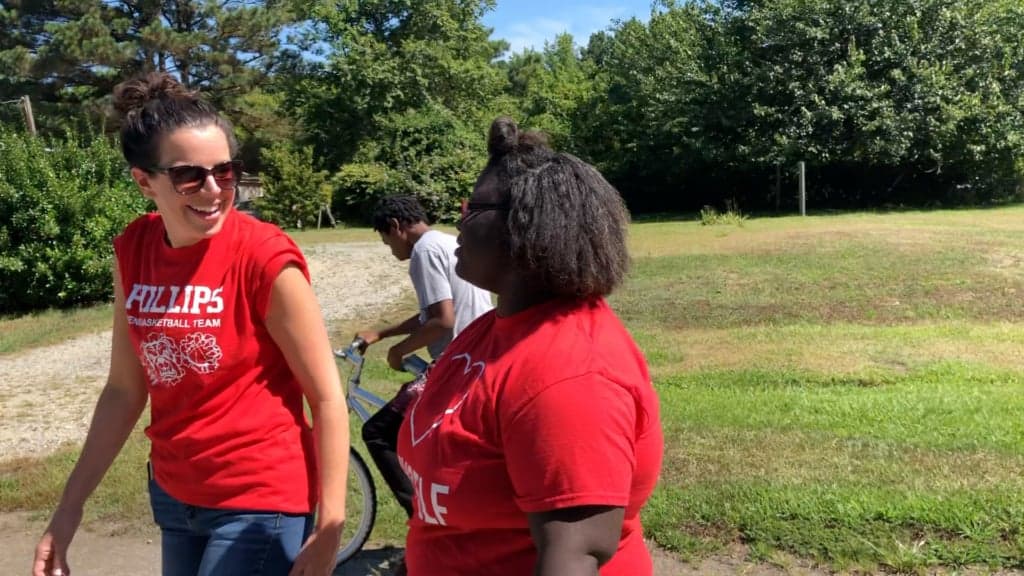
Remember Miracle? She is just one of our 1,368,256 students. She has had a particular lived experience in particular schools in a particular community.
There is no one-size-fits-all solution that will work for all of our Miracles.
That reality requires us to re-center our conversations on understanding our students, their different experiences, and what’s in their best interest — family by family, school by school, and district by district.
Recommended reading
